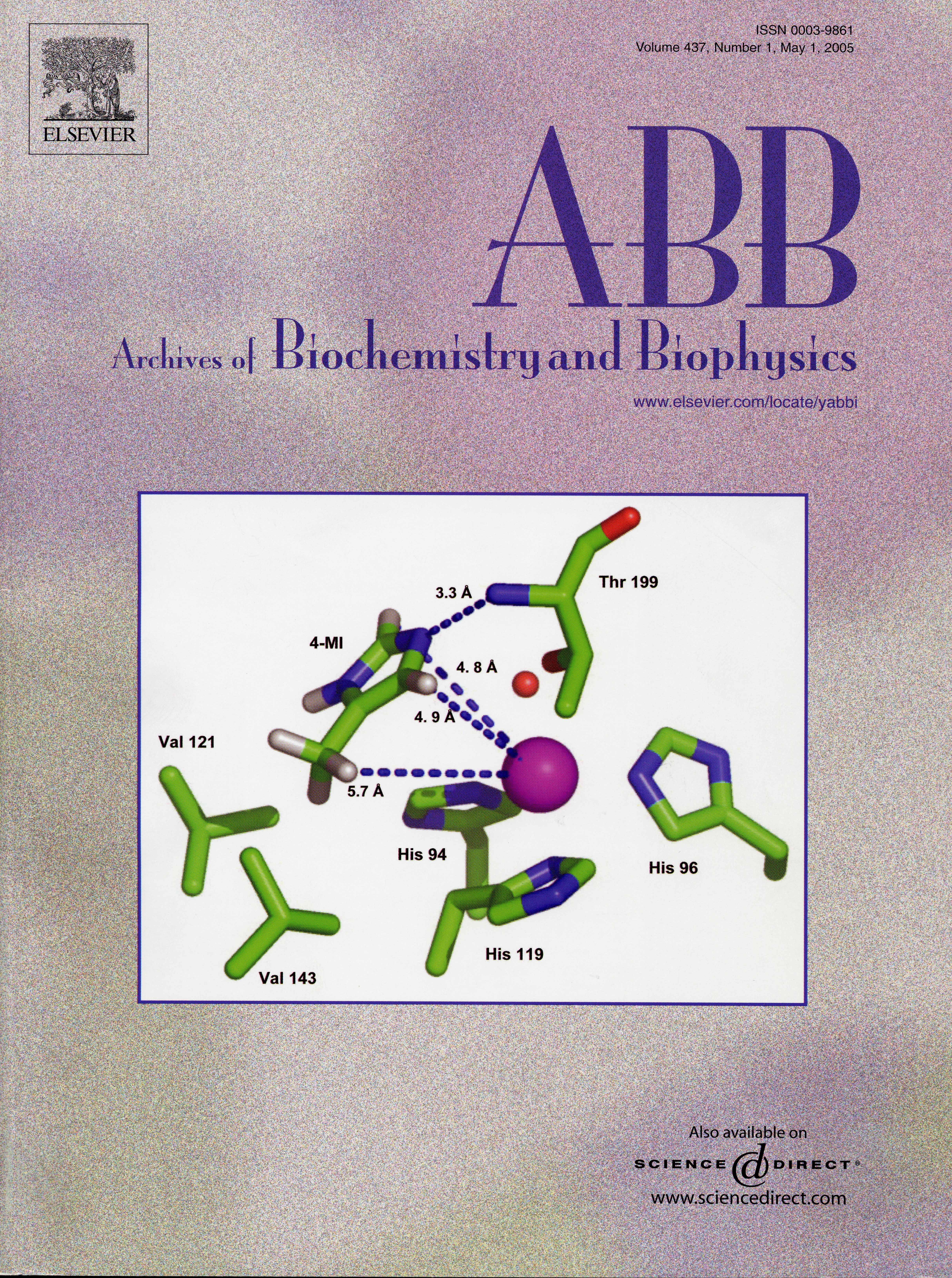Proton transfer from exogenous donors in catalysis by human carbonic
anhydrase II
Arch. Biochem. Biophys. 2005, 437, 106-114.
Ileana Elder,a Chingkuang Tu,a
Li-June Mig,b Robert McKenna,c and David N. Silvermana
aDepartment of Pharmacology and Therapeutics,
University of Florida College of Medicine, Gainesville, FL 32610-0267, USA
bDepartment of Chemistry and Institute for Biomolecular
Science, University of South Florida, 4202 Fowler Avenue, Tampa, FL 33620-5250,
USA
cDepartment of Biochemistry and Molecular Biology,
University of Florida College of Medicine, Gainesville, FL 32610-0267, USA
Received 9 February 2005; revised 9 February 2005. Available
online 17 March 2005
In the site-specific mutant of human carbonic anhydrase in which the proton
shuttle His64 is replaced with alanine, H64A HCA II, catalysis can be activated
in a saturable manner by the proton donor 4-methylimidazole (4-MI). From
1H NMR relaxivities, we found 4-MI bound as a second-shell ligand
of the tetrahedrally coordinated cobalt in Co(II)-substituted H64A HCA II,
with 4-MI located about 4.5  from the metal. Binding constants of 4-MI to H64A HCA II were estimated
from: (1) NMR relaxation of the protons of 4-MI by Co(II)-H64A HCA II, (2)
the visible absorption spectrum of Co(II)-H64A HCA II in the presence of
4-MI, (3) the inhibition by 4-MI of the catalytic hydration of CO2,
and (4) from the catalyzed exchange of 18O between CO2
and water. These experiments along with previously reported crystallographic
and catalytic data help identify a range of distances at which proton transfer
is efficient in carbonic anhydrase II.
from the metal. Binding constants of 4-MI to H64A HCA II were estimated
from: (1) NMR relaxation of the protons of 4-MI by Co(II)-H64A HCA II, (2)
the visible absorption spectrum of Co(II)-H64A HCA II in the presence of
4-MI, (3) the inhibition by 4-MI of the catalytic hydration of CO2,
and (4) from the catalyzed exchange of 18O between CO2
and water. These experiments along with previously reported crystallographic
and catalytic data help identify a range of distances at which proton transfer
is efficient in carbonic anhydrase II.
It is the cover story
of the issue in ABB!

(reprint
in pdf)
 from the metal. Binding constants of 4-MI to H64A HCA II were estimated
from: (1) NMR relaxation of the protons of 4-MI by Co(II)-H64A HCA II, (2)
the visible absorption spectrum of Co(II)-H64A HCA II in the presence of
4-MI, (3) the inhibition by 4-MI of the catalytic hydration of CO2,
and (4) from the catalyzed exchange of 18O between CO2
and water. These experiments along with previously reported crystallographic
and catalytic data help identify a range of distances at which proton transfer
is efficient in carbonic anhydrase II.
from the metal. Binding constants of 4-MI to H64A HCA II were estimated
from: (1) NMR relaxation of the protons of 4-MI by Co(II)-H64A HCA II, (2)
the visible absorption spectrum of Co(II)-H64A HCA II in the presence of
4-MI, (3) the inhibition by 4-MI of the catalytic hydration of CO2,
and (4) from the catalyzed exchange of 18O between CO2
and water. These experiments along with previously reported crystallographic
and catalytic data help identify a range of distances at which proton transfer
is efficient in carbonic anhydrase II. 